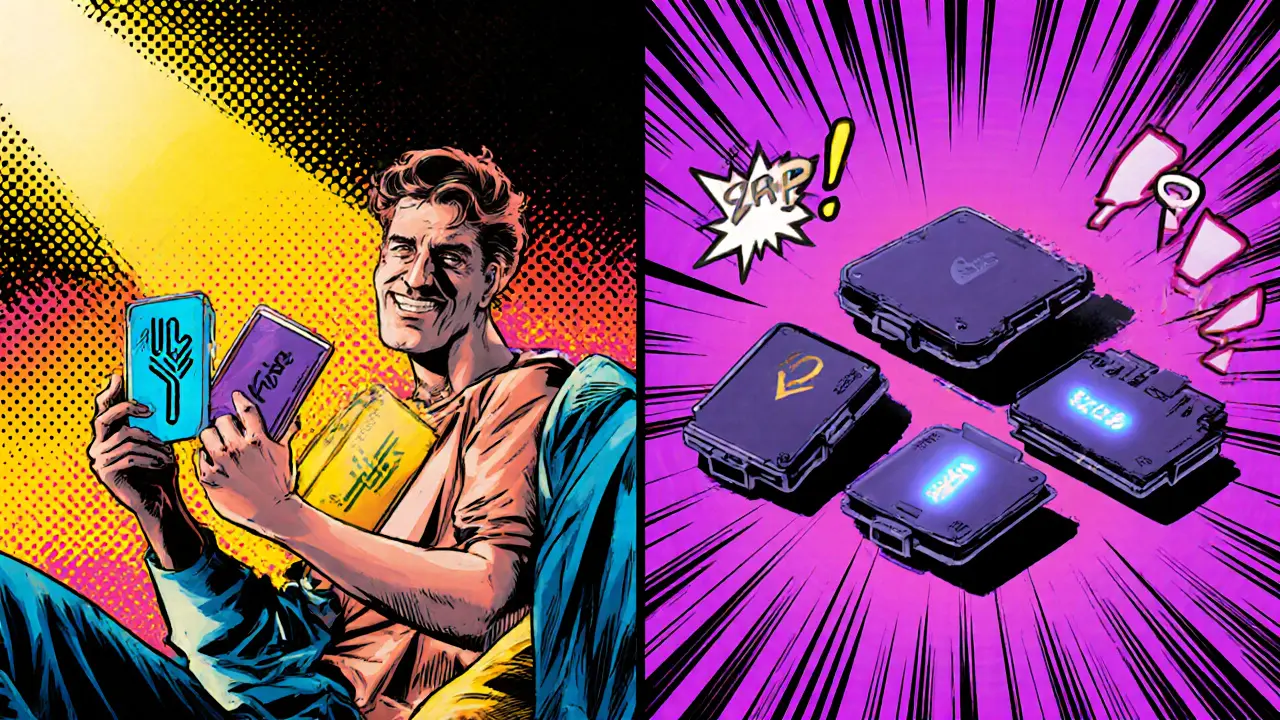Threshold Signature: What It Is and Why It Matters
When working with threshold signature, a cryptographic method that lets a group produce a valid signature once a minimum number of participants combine their partial keys. Also known as threshold signing, it unlocks new security and efficiency options for modern blockchain protocols.
It shares a goal with multi‑signature, which requires every signer to attach their own signature to a transaction. Unlike multi‑signature, a threshold signature only needs a subset—say, three out of five—to finish the job, which cuts down on data size and speeds up verification. Another popular variant is BLS signatures, a type of cryptographic scheme where any number of signatures can be aggregated into a single short proof. BLS makes the math behind threshold signatures especially elegant, letting participants combine shares without extra overhead.
Behind the scenes, these schemes rely on distributed key generation, a process where the signing group creates a shared public key while each member holds a private fragment. No single party ever knows the full secret key, which dramatically lowers the risk of key theft. The combination of distributed key generation and threshold signing creates a robust foundation for blockchain consensus, where nodes must agree on the next block. By requiring only a threshold of signatures, consensus can stay fast and resilient even if some nodes go offline.
How Threshold Signatures Work in Practice
Understanding a threshold signature starts with three steps: (1) participants run a distributed key generation protocol to produce a shared public key and individual secret shares; (2) when a message needs to be signed, any subset meeting the threshold size creates partial signatures using their secret shares; (3) those partials are mathematically combined into a single, verifiable signature that anyone can check against the public key. The math ensures that fewer than the required shares cannot forge a valid signature, while more shares simply reinforce the same result.
This flow brings concrete benefits. First, it cuts storage needs: a single aggregated signature replaces dozens of individual signatures. Second, it improves fault tolerance—if a few validators crash, the network can still progress as long as the threshold is met. Third, it enhances security; an attacker would need to compromise multiple participants instead of a single key holder. Projects like Ethereum 2.0, Filecoin, and many decentralized finance platforms already use threshold schemes to secure staking, cross‑chain bridges, and governance votes.
Choosing the right type matters. BLS signatures excel when you need massive aggregation, such as sharding where hundreds of validators must sign blocks. Simple Shamir‑based thresholds are easier to implement but may require more communication rounds. Some protocols blend both, using BLS for fast aggregation and a lightweight DKG for key setup.
However, there are trade‑offs. Distributed key generation can be communication‑heavy, especially in large networks, and it demands a reliable randomness source. Implementations must also guard against rogue‑key attacks, where a malicious participant crafts a share that weakens the overall security. Proper protocol design and thorough audits are essential to avoid these pitfalls.
For developers, integrating threshold signatures means adding a few new libraries and adjusting wallet flows. Most modern cryptographic SDKs—like the go‑bls library or the threshold‑crypto suite from ConsenSys—provide ready‑made APIs for key generation, share signing, and aggregation. After integration, test scenarios should cover partial sign failures, network partitions, and key rotation, ensuring the system behaves gracefully under stress.
Overall, threshold signatures are reshaping how decentralized systems achieve trust. By linking multi‑signature logic, BLS aggregation, distributed key generation, and blockchain consensus, they offer a powerful toolbox for anyone building secure, scalable protocols. Below you’ll find a curated set of articles that dive deeper into each of these aspects, from beginner guides to advanced technical breakdowns.

2-of-3 vs 3-of-5 Multisig Wallets: Which Is Right for You
Compare 2-of-3 and 3-of-5 multisig wallets, see which offers better security, ease of use, and fit for individuals or institutions.
February 14 2025